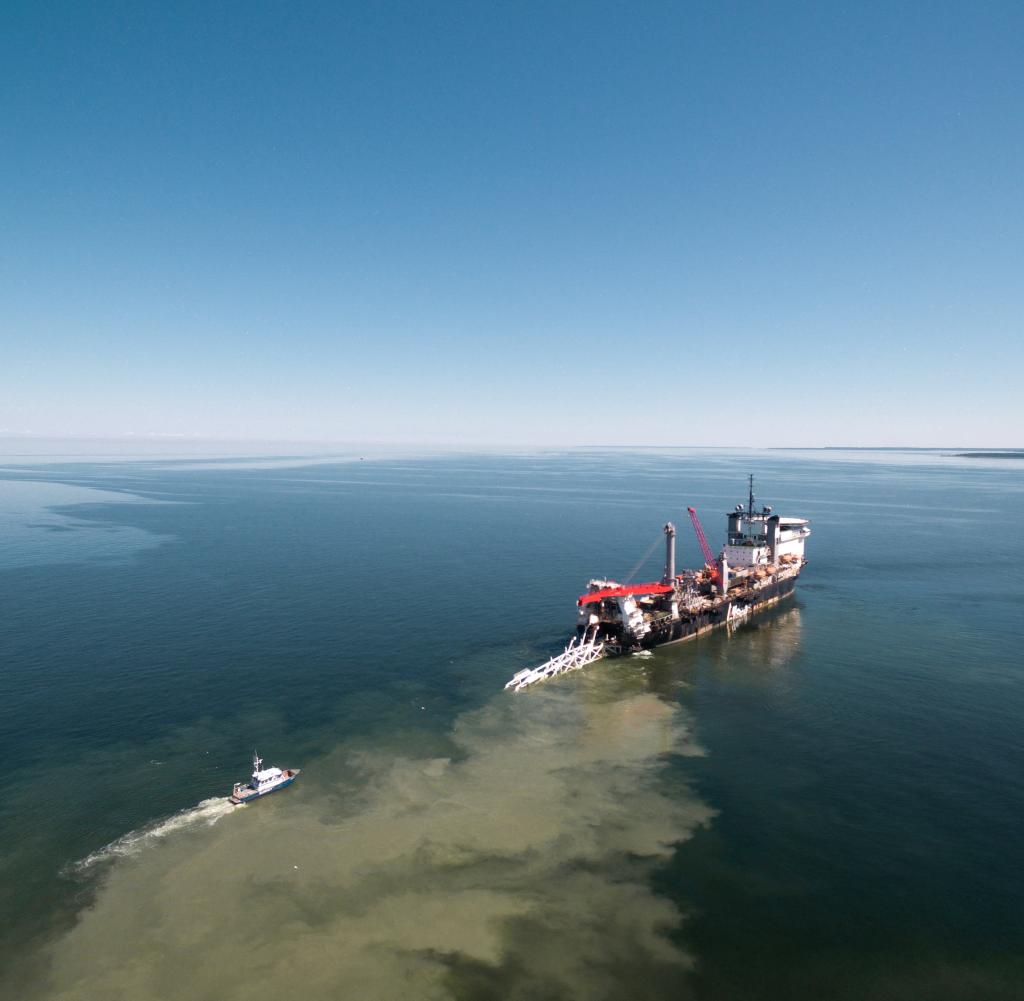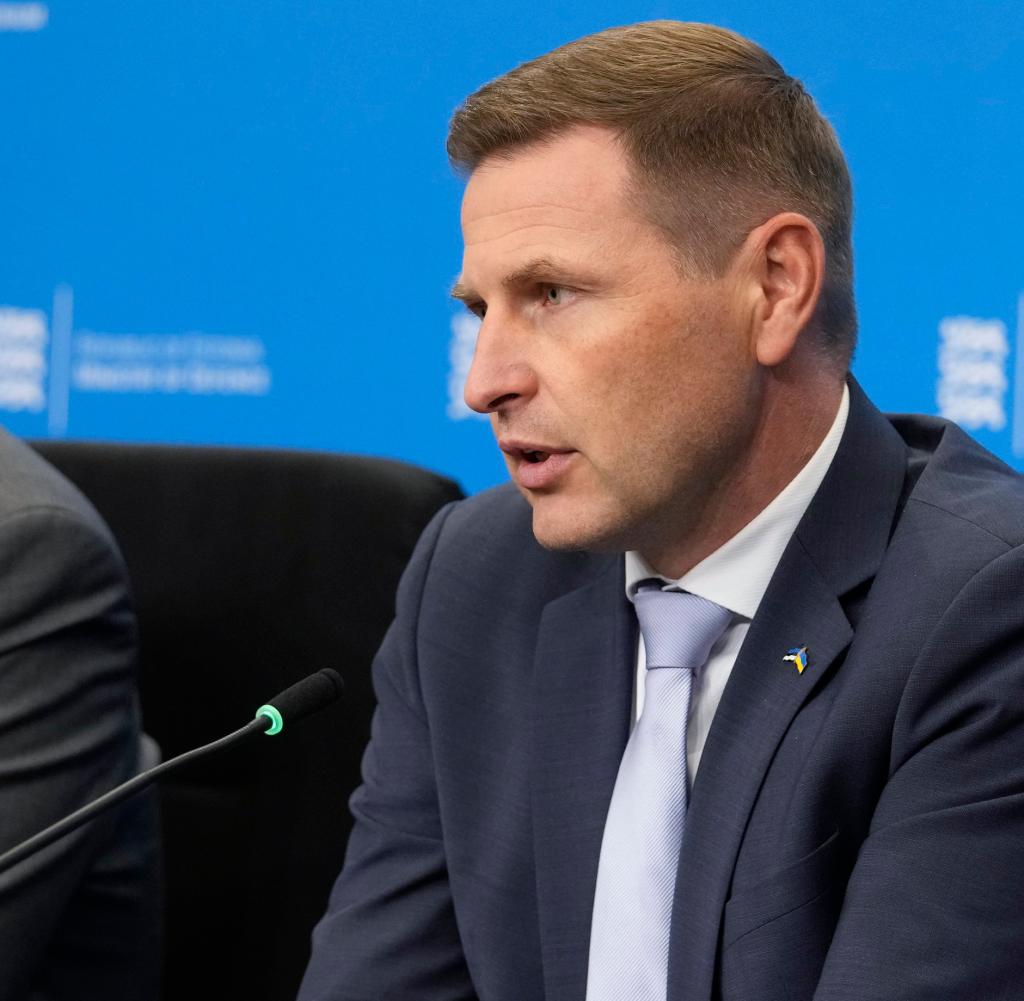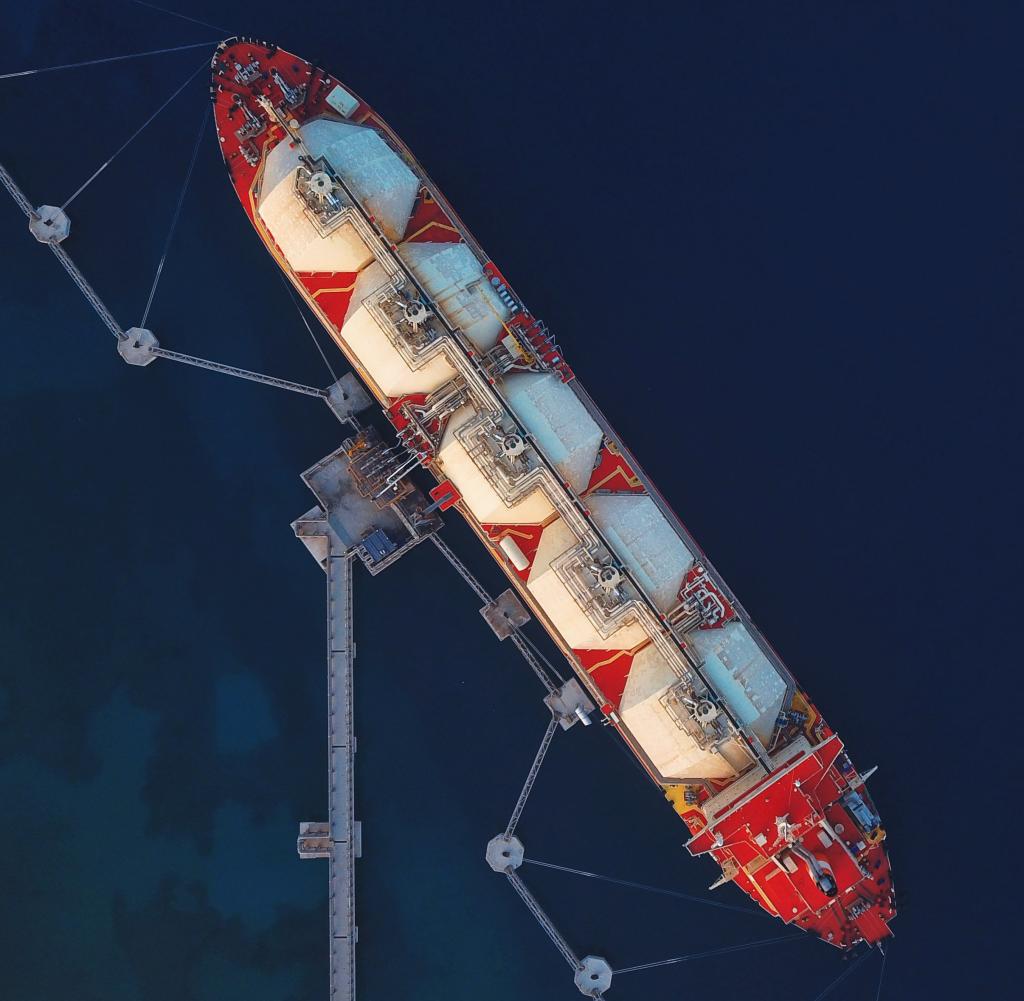Finland does not rule out state involvement in pipeline damage

A special ship laying the pipeline in 2019
Source: via REUTERS
A possible cause had been sought since the sudden drop in pressure in a gas pipeline between Finland and Estonia. There are now many indications that the line was intentionally damaged. The Finnish intelligence chief Antii Pelttari even believes the involvement of a state actor is possible.
NAfter the damage to a natural gas pipeline in the Baltic Sea between Finland and Estonia, the Finnish secret service believes that it is possible that a state was involved. The involvement of a state actor cannot be ruled out, Finnish intelligence chief Antii Pelttari said on Thursday. The aim of the investigation is to find out who is behind it. There is no comment on the details.
Finnish investigators reported on Wednesday that external traces had been found on the seabed next to the damage site. The shipping traffic at the time of the incident is also being analyzed. A senior investigator had said it currently appeared the damage was caused by a mechanical force and not an explosion.
“It is clear to see that this damage was caused by a fairly strong force,” Hanno Pevkur said on Wednesday. “So we still have to specify what it is exactly, but at the moment it looks more like it’s mechanical impact or mechanical destruction.”
Estonia’s Defense Minister Hanno Pevkur (r.) at a press conference on the incidents related to “Balticonnector”
Source: AP/Sergei Grits
Lithuania’s Energy Minister Dainius Kreivys spoke out in favor of greater protection of the energy infrastructure in the Baltic Sea. “The most vulnerable infrastructure is offshore and is difficult to protect,” he said on Lithuanian radio on Wednesday. “We probably need an even higher level of surveillance, an even higher level of protection. And we probably need, as the Secretary of State mentioned, common agreements and a division of labor about who does what.”
Stoltenberg threatens a “decisive response” from NATO
NATO Secretary General Jens Stoltenberg threatened a decisive response from the defense alliance. “If it turns out to be an attack on critical NATO infrastructure, NATO will unite and respond decisively,” he told a meeting of alliance defense ministers.
The Independent Seismological Institute of Norway (NORSAR) had stated on its website on Tuesday that on the night of Sunday (12:20 a.m. CEST) “a suspected explosion was detected off the Finnish Baltic Sea coast.” Finnish President Sauli Niinistö had previously said that the pipeline was almost certainly through “external influence” caused damage.
Finland’s President Sauli Niinistö explained the gas leak as “external influence” (archive)
Source: picture alliance/ZUMAPRESS.com/Marina Takimoto
Niinistö literally stated on Tuesday: “It is likely that the damage to both the gas pipeline and the telecommunications cable is the result of external influences.” The Balticonnector pipeline transports gas from Estonia to Finland.
Lithuania’s Energy Minister Dainius Kreivys called for greater protection of the energy infrastructure in the Baltic Sea. “The most vulnerable infrastructure is offshore and is difficult to protect,” he said on Lithuanian radio on Wednesday. “We probably need an even higher level of surveillance, an even higher level of protection. And we probably need, as the Secretary of State mentioned, common agreements and a division of labor about who does what.”
The military and secret service were also involved in research into the causes
The operating companies, Gasgrid from Finland and Elering from Estonia, noticed a sudden drop in pressure in the pipeline early on Sunday morning. Gas transport between the two EU countries was then stopped. The operators announced investigations. According to reports, the military and secret service were also involved in the investigation.
“Due to the unusual pressure drop, it is reasonable to believe that the cause of the incident was damage to the offshore gas pipeline and a resulting leak,” Gasgrid said earlier on Tuesday. The gas leak was stopped by insulating the section.
Repairs will take at least five months
According to the operator, repairing the pipeline will take at least five months. The Finnish state-owned company Gasgrid announced this on Wednesday “based on preliminary expert assessments”.
The Finnish Criminal Investigation Department opened an investigation on Tuesday. When asked whether there was any reason to suspect Russian involvement, Orpo evaded the question. The most important thing is that the matter is properly investigated. We live in troubled times, but there is no reason to worry.
Balticconnector went into operation at the beginning of 2020. The approximately 150 kilometer long pipeline runs from Inkoo in Finland across the Gulf of Finland to Paldiski in Estonia. The affected offshore section in the sea is a good 77 kilometers long. It is significantly shorter than the Nord Stream 1 and 2 gas pipelines, which were damaged in acts of sabotage near the Danish Baltic Sea island of Bornholm around a year ago. It is still unclear who was behind the Nord Stream attacks.



